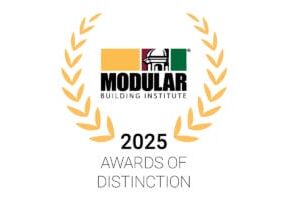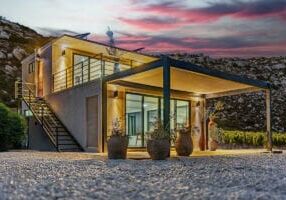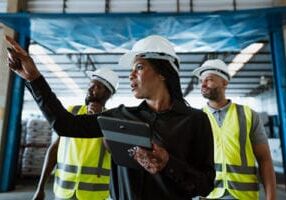Dynamic Automation Helps Company Create “Snowflakes”
House of Design, located in Nampa, Idaho, provides a unique solution to building trusses, walls, and other building assemblies: they call it dynamic automation. Shane Dittrich, CEO, explained the term as “the robots have no idea what they’re building today.”
Instead of tasking a robot to build only one type and size of assembly, their software analyzes the most efficient order to produce a variety of similar products in, no matter what size they are. The software takes advantage of efficiencies to shave off milliseconds and full seconds from standard automated fabrication.
House of Design’s proprietary software translates 3D models into machine code, which then communicates with the robot to tell it what size assembly to build. Because buildings are designed uniquely and no truss looks the same, the dimensions and how they are assembled look different. Each is a unique size and shape, or a “snowflake,” as Dittrich calls them. “When a robot picks up a stud,” said Dittrich, “it doesn’t care how long it is. The same End of Arm Tool can pick up a stud if it’s a 7-foot wall or a 10-foot wall, it doesn’t matter.”
Their system is able to switch between assembly sizes and shapes quickly and easily, and make each one in succession in the most efficient way. There are some constraints, such as the size of the assembly table, but otherwise the available configurations are endless.
This level of production customization is more complicated than it seems, as customers don’t always request their materials in the same way. Some want trusses stacked from biggest to smallest for shipping, others want them stacked in the order they’ll be installed.
Luckily, their system doesn’t care and simply fulfills the requested order in the most efficient way given the customer’s requests.
Before production begins, the software analyzes and validates the design, helping to ensure that the assembly is in the proper sequence and that there aren’t any problematic areas that need to be addressed. This helps keep the manufacturing process running smoothly. There are design constraints and material tolerances that must be taken into consideration, but otherwise the system can build almost anything.
“In my mind it’s relatively easy to program a robot to build a wall with studs 16 inches on center. It’s just a stud every 16 inches on the top and bottom plate. It’s a little more difficult to program it to do laminations, staggered studs, blocking, lay flats, and double top plates.” Even complex designs, like wall panels with window and door openings, are able to be programmed into the system.
The software is programmed in multiple languages, including ABB’s proprietary robot language called Rapid, and more standard languages like Rust and PLC-structured text.
Although the rest of the world is fascinated with artificial intelligence, Dittrich said its influence on his process is limited. “Right now, to look at a process and take milliseconds out of a robot’s move takes an experienced robot person. These experts can take a process that takes five seconds down to three and a half. When you’re running that process 24/7, that second and a half adds up. I do believe that AI is going to be able to help us with that in the future.”
The company stays with its customers, working with them on system installation, training, and operations. They provide resident engineers with each system to work side by side with operations workers until it is up and running smoothly.
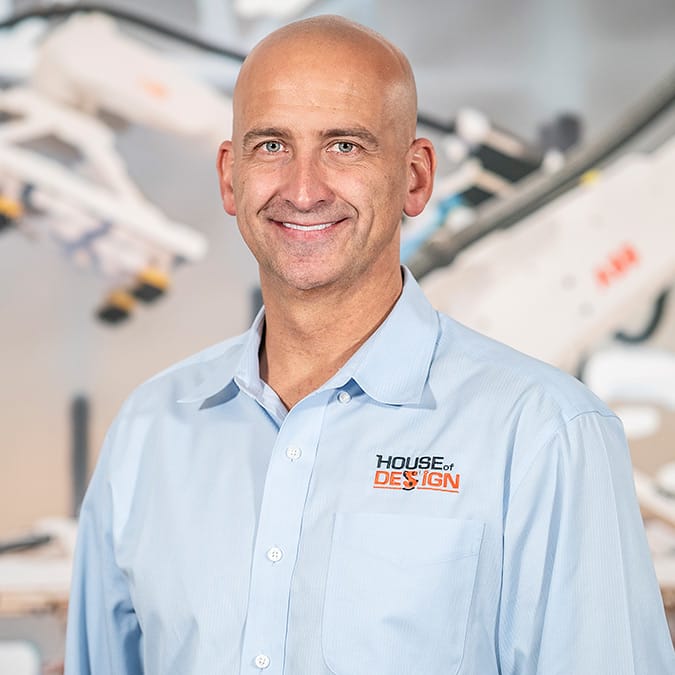
Shane Dittrich, CEO at House of Design.
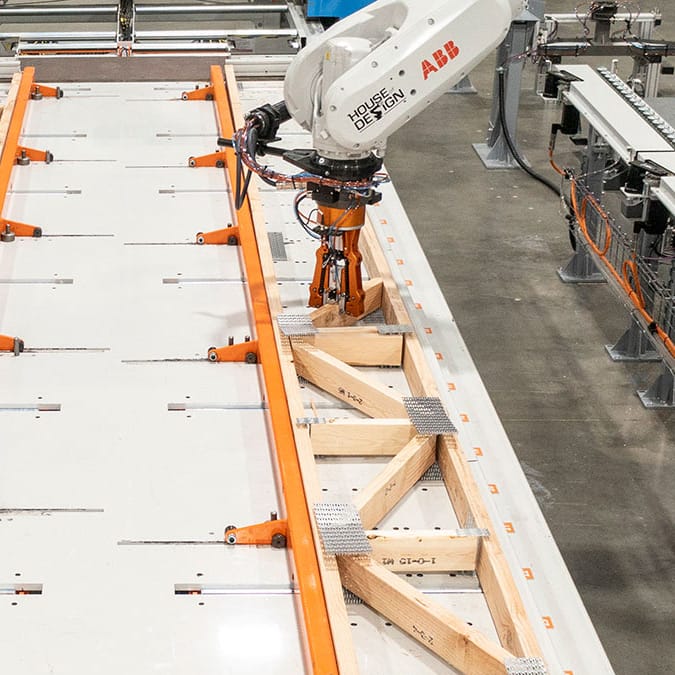
A House of Design-programmed robot assembles a truss for a modular building.
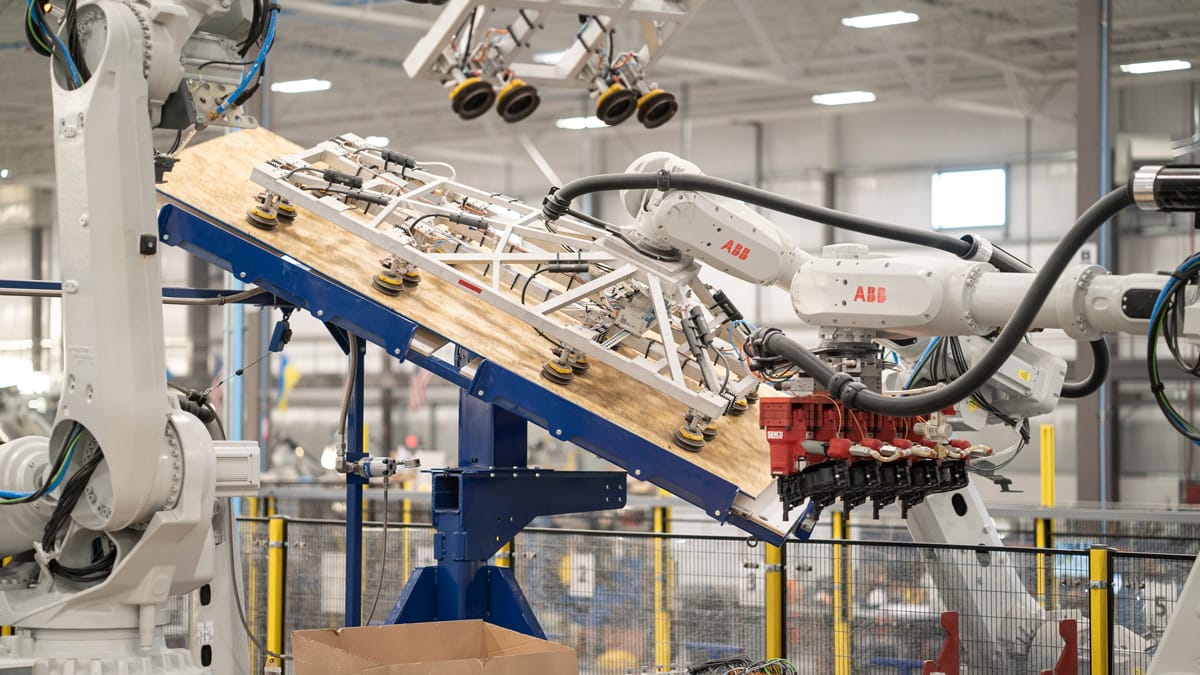
Starting Small
House of Design was founded in 2012 and was focused on custom robotic automation. As Dittrich put it, “We would do anything and everything for anybody.” The company quickly grew from two to almost 100 people right now.
In 2018 they landed work with both Katerra and Autovol. Dittrich has a lot of respect for how Katerra pushed the industry forward, and the contract with Autovol is ongoing and has led to the construction of almost 30 miles of wall assembly.
After getting the contracts with Katerra and Autovol the company pivoted to focus almost exclusively on construction and modular building. Their mission now is to use their robotic automation solutions to help solve the affordable housing crisis.
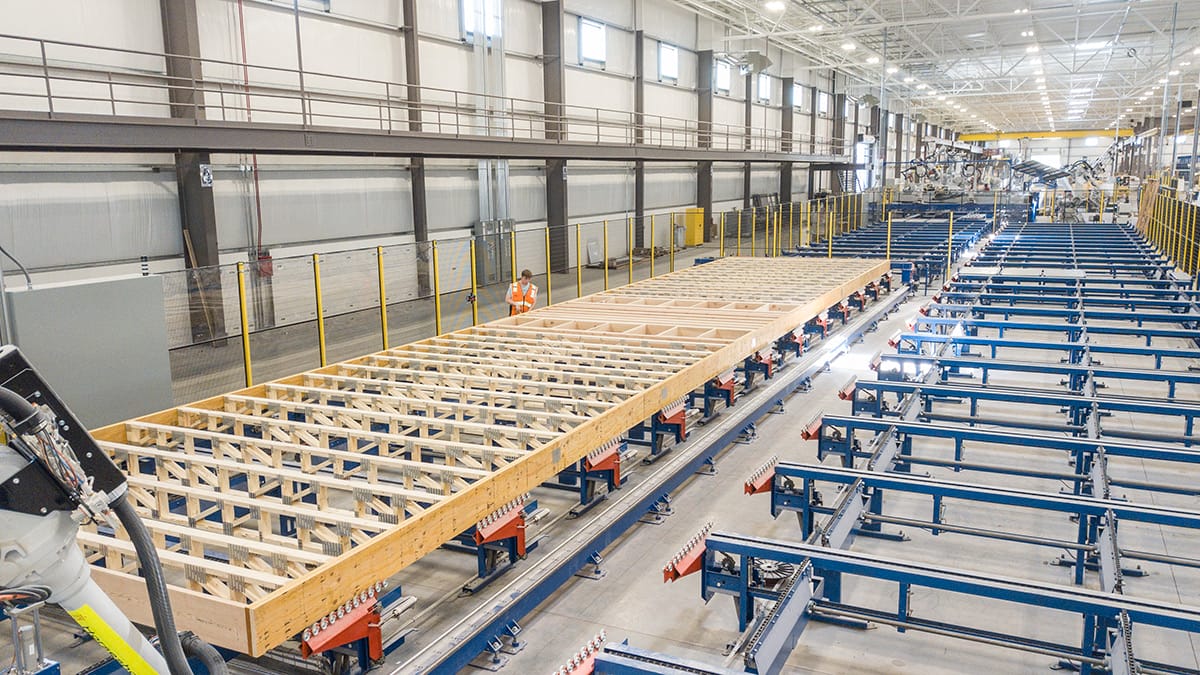
Benefits of Automation
Dittrich sees several benefits to the increased use of robots and automation in the construction industry. One of the most important is that technology opens the door to more diversity in the workforce. It has the ability to appeal to a wider audience, such as women, those of smaller stature, older workers, and those with technological knowledge and aptitudes. “Nowadays younger workers don’t want to be lifting 4 feet by 8 feet sheets of gypsum board all day long. It’s a hard job, and nobody should have to do it. But they love operating a robotic system. It’s almost like gaming to them. Automation opens up the available labor pool for factories.”
Another benefit is improved safety. “We want to get the nail guns out of worker’s hands, because I can guarantee you’re going to have an accident. At Autovol, we’ve built 28 miles of wall assemblies without someone getting hurt with a nail gun. At a manual manufacturing facility, it’s almost guaranteed that someone has driven a nail into their hand.”
Consistent quality is another advantage. “We’re going to pump out the exact same thing every single time.” People can have bad days and bring those bad days to work, greatly affecting the product that comes out of a factory. Automation helps bring consistency to the process.
Labor savings is another benefit that is discussed in the industry, but Dittrich sees it more as labor redistribution. “I don’t know of any company where we’ve gone in, installed automation, and they actually removed or fired people. Usually, they move them to a process that isn’t automated to increase production.”
The Future of Automation
Unfortunately, the cost of automation is increasing, as the price of the steel and electronics used to build robots has gone through the roof in recent years. Dittrich said the industry needs to rethink its mindset when it comes to the role of automation in the workforce. If contractors don’t have enough workers to produce according to project schedules, they’ll need to seek out alternatives, such as automation, to help them keep up with building demand. At that point, cost isn’t going to be as important.
Although automation, even dynamic automation, may not solve all of the construction industry’s woes, it can make significant improvements in specific areas and on specific tasks. “It’s a solution to the specific task that you’re automating, and if it pencils out, then great. If not, that task is not for automation.”
Dittrich sees more on-site manufacturing as the future of automation in the construction industry. Although moving production out of the controlled environment of a warehouse or factory does present risks. Efficiency and safety may be compromised. When asked if we’ll see buildings built exclusively by robots in the near future, Dittrich says he can see that if we address the differences in local building codes and standardize materials dimensions and quality. “You improve those two things, and we will be right there with you to automate those processes.”
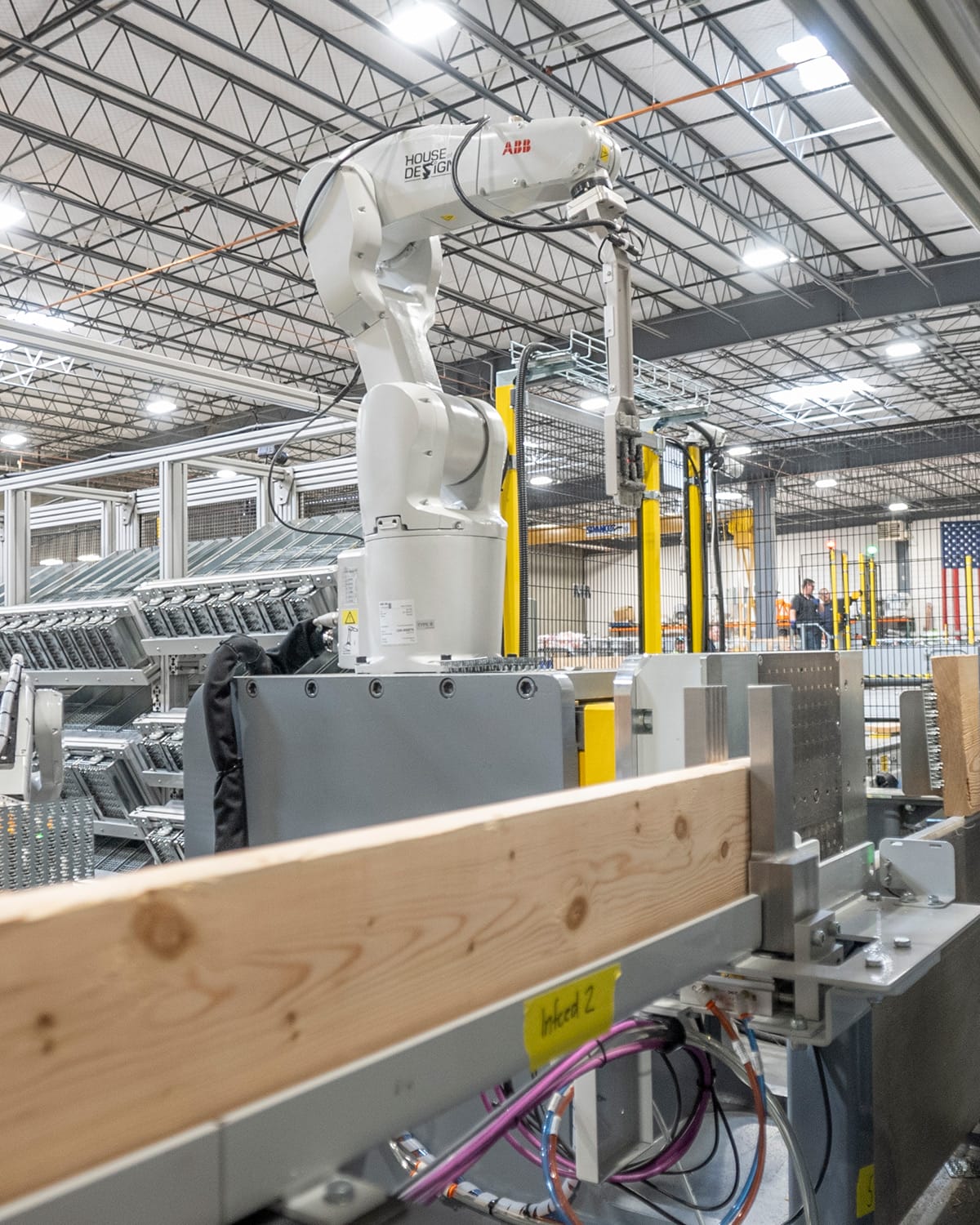
About the Author: Dawn Killough is a freelance construction writer with over 25 years of experience working with construction companies, subcontractors and general contractors. Her published work can be found at dkilloughwriter.com.
More from Modular Advantage
Celebrating the Winners of MBI’s 2025 Awards of Distinction
MBI’s Awards of Distinction are presented annually, traditionally on the final evening of its North American World of Modular conference and tradeshow. This year’s Awards were presented in a variety of categories, including several each for permanent modular construction projects and relocatable buildings. Excellence in “green” modular construction and marketing were also recognized.
MBI Welcomes R.I. Group Founder & President Salvatore Tafuro to the Industry’s Hall of Fame
In 1973, Salvatore Tafuro, only in his twenties and already supporting a family of three children, set out to realize his entrepreneurial dream. From a humble garage in Leverano, in the heart of Salento, he began producing metal structures and aluminum fixtures for the construction industry.
The Best-Kept Secret in Housing
What can we do to right the ship, overcome these circumstances, capitalize on the opportunity, and address this epidemic in the housing sector? It’s easier than you might think.
The Blueprint for Accountability: How Mastery, Autonomy, and Purpose Drive Performance in Construction & Manufacturing
Accountability is one of the most critical elements of a thriving organization, yet many leaders in the construction and manufacturing industries struggle to create a culture where it truly thrives. High-performance teams require more than just technical skills and efficiency—they need strong accountability, alignment with the company’s vision, and a deep sense of ownership.
AI, Faster Sets, and Automation: The Future of Modular is at World of Modular
While the modular building industry has long known that it can be an effective solution to increase affordable housing, the word is slowly spreading to more mainstream audiences. Three presentations at this year’s World of Modular in Las Vegas hope to provide insight and direction for those seeking a real solution to the crisis.
An Insider’s Guide to the 2025 World of Modular
The Modular Building Institute is bringing its global World of Modular (WOM) event back to Las Vegas, and with it comes some of the industry’s best opportunities for networking, business development, and education. Over the course of the conference’s four days, there will be numerous opportunities for attendees to connect, learn, and leverage event resources to get the most out of the conference.
Affordable Housing Now: The Industry’s Best Bring New Solutions to World of Modular
While the modular building industry has long known that it can be an effective solution to increase affordable housing, the word is slowly spreading to more mainstream audiences. Three presentations at this year’s World of Modular in Las Vegas hope to provide insight and direction for those seeking a real solution to the crisis.
Opportunities for Innovation in Modular Offsite Construction
Modular Offsite Construction has already shattered the myth that it only produces uninspired, box-like designs. Architectural innovations in module geometry, configurations, materials, and products make it possible to create visually stunning buildings without sacrificing functionality or efficiency.
Safe Modular Construction with Aerofilm Air Caster Transport
In collaboration with Aerofilm Systems, Heijmans developed innovative skids using air caster technology for moving modules easily and safely. These pallets are equipped with an auto-flow system, making operation extremely simple.
Miles, Modules, and Memes: Building a Modular Network One Flight at a Time
At the end of the day, social media is just another tool for building connections, and like any other tool, needs to be used skillfully to work properly. Use social media thoughtfully, and it will open doors to real opportunities and relationships you didn’t even see coming.

